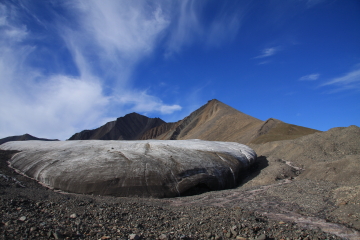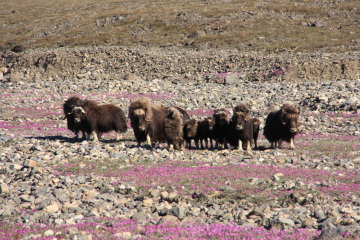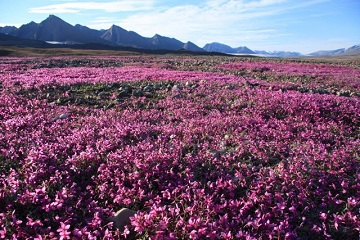- High Arctic ecology -
Resently the climate is changing rapidly, and high latitude ecosystems are especially affected. It is thought that it is important to clarify a connection between climate and vegetation at these high latitudes. For this reason we have done field research to attempt to explain the vegetation development system at areas such as Ellesmere Island, and Qikiqtaaluk Region of the Canadian Territory of Nunavut where the glaciers are receding.




More specifically we looked at various kinds of moraines formed at different times during deglaciation, and investigated how the changing climate induced vegetation development for millions of years in Holocene epoch (Mori et al. 2006, 2008). primary succession in the high arctic is generally quite different from that in more southern regions such as the low arctic and temperate regions (Hodkinson et al., 2003). The results showed an increasing number of species of vascular plants as the glaciers recede, indicating a very rare primary succession mechanism occurring at the high arctic (Mori et al. 2008).

It is thought that this kind of vegetation development pattern at high latitude arctic is very hard to find as the abiotic conditions make it difficult for vegetation to grow (Matthews 1992). Vegetation development strongly affected by biological factors at the polar oasis where it is over 80 degrees north of latitude was observed in our research (Mori et al. 2008).

References
Hodkinson, ID et al. (2003) Community assembly along proglacial chronosequences in the high Arctic: vegetation and soil development in north-west Svalbard. Journal of Ecology 91: 651-663.
Matthews JA (1992) The ecology of recently-deglaciated terrain. A geographical approach to glacier forelands. Cambridge University Press
Mori AS, Osono T, Uchida M, Kanda H. (2008) Changes in the structure and heterogeneity of vegetation and microsite environments with the chronosequence of primary succession on a glacier foreland in Ellesmere Island, high arctic Canada. Ecological Research 23: 363-370.
Mori A, Osono T, Iwasaki S, Uchida M, Kanda H. (2006). Topographical variation in initial recruitment and establishment of vascular plants and microhabitat conditions along a slope of the recently-deglaciated moraine in Ellesmere Island, high arctic Canada. Polar Bioscience 19: 85-95.